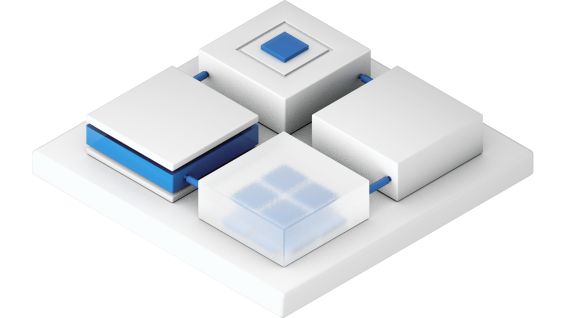Business Logic Analysis of Common Mini Programs

Business logic sorting of common small programs At present, the number of small program users has exceeded 1 billion, covering more than 90% of mobile Internet users, of which life services, retail consumption, and information services accounted for more than 60%. Mini programs can integrate resources, standardize processes, and shorten service chains, starting from the perspective of solving industry pain points, and form a business undertaking platform through software technology.
1、 Life service mini program
1. Same city delivery mini program
Background: With the rise of instant retail, users' demand for fresh produce, medicines, documents, and other items that can be delivered within 30 minutes has surged. Traditional express delivery cannot meet the demand for short distance instant delivery.
Business logic: Users post delivery requirements (item type, pickup and delivery address, delivery time requirements) → Platform intelligently matches nearby delivery personnel/delivery personnel to grab orders → Delivery personnel pick up and track in real-time → Users confirm payment after delivery.
Main functions: order publishing (supporting graphic and textual descriptions), rider location tracking, cost calculation (by distance/weight/time), online payment, evaluation and complaint, merchant entry (local supermarket/pharmacy exclusive delivery channel).
Target audience: Individual users (temporary delivery, shopping), local small and medium-sized businesses (food and beverage takeaway, supermarket delivery), enterprise users (urgent delivery of documents within the same city).
Profit model: Delivery fee commission (10% -20%), merchant entry annual fee/deposit, member privileges (free delivery fee, priority delivery), advertising space (local merchant promotion).
2. Housekeeping reservation mini program
Background: Traditional domestic service has high commission rates for intermediaries, no guarantee of service quality, and difficult after-sales traceability, resulting in a lack of direct communication channels between users and domestic staff.
Business logic: Housekeeping personnel/institutions joining (submitting qualification certification) → platform review and listing services (cleaning, nanny, maintenance, etc.) → user screening service types, times, prices → online appointment payment → evaluation after service completion.
Main functions: Service classification (daily cleaning, deep cleaning, home appliance maintenance), personnel qualification display (health certificate, skill certificate), appointment calendar (selecting service time period), service process photo confirmation, after-sales rights protection channel, coupon distribution.
Target audience: household users (office workers, mothers, elderly), corporate users (office cleaners), domestic service personnel/small domestic service companies.
Profit making methods: service fee commission (8% -15%), annual fee for household registration, user membership (discounted price, priority order delivery), value-added services (sales of household skills training courses).
3. Ordering Mini Program
Background: The catering industry is facing the dilemma of "long offline queues and high commission from delivery platforms". Merchants urgently need private domain traffic operation tools, and users also need more convenient ordering methods.
Business logic: Restaurant merchants join (upload menu, set prices) → Users scan/search to enter the mini program → Browse menus, place orders and make payments (pick-up/delivery) → Merchants accept orders and make them → Pick up code/delivery tracking confirmation.
Main functions: menu management (classification, graphic introduction, inventory warning), order processing (accepting/rejecting/refunding), membership system (points, stored value), coupons (discounts, discounts), food delivery docking (can be associated with third-party delivery or self built teams), data statistics (sales ranking, user profile).
Target audience: Consumers (ordering in store without queuing, direct delivery to merchants), small and medium-sized catering merchants (fast food restaurants, milk tea shops, hot pot restaurants).
Profit model: Order commission (5% -12%, lower than mainstream food delivery platforms), merchant entry fee, advertising space (new product promotion), membership stored value commission, and delivery fee difference.
4. Running errands mini program
Background: Users have personalized needs such as "buying, picking up, and handling" (such as buying milk tea, picking up express delivery, and queuing), and traditional delivery cannot cover non item services.
Business logic: Users post errand requests (type, location, budget) → errand runners receive orders and quotes → errand runners execute tasks after user confirmation → task completion uploads vouchers (photos/videos) → user payment evaluation.
Main functions: requirement classification (purchasing, pick-up, and agency), online communication (negotiating details with runners), cost guarantee (payment platform, transfer to runners after completion), emergency order markup, and task progress tracking.
Target audience: Lazy economy users, time constrained office workers, elderly/sick people who are unable to go out, individuals with temporary agency needs.
Profit methods: commission for running errands (15% -25%), profit sharing for emergency orders, membership fee (no commission amount, priority order distribution), and corporate cooperation (such as queuing up to buy concert tickets).
5. Waste Recycling Mini Program
Background: Traditional waste recycling is "difficult to access, opaque in price, and difficult to classify", making it inconvenient for users to dispose of idle waste and difficult for recyclers to accurately reach customers.
Business logic: User makes an appointment for recycling (selecting the type and approximate weight of waste) → Recycler confirms the order acceptance time → On site weighing and price calculation → On site payment/transfer → Recycler uploads the recycling record.
Main functions: Waste classification guide (paper, plastic, metal, etc.), real-time quotation (updated according to market trends), appointment for on-site visits, positioning of recyclers, point rewards (points earned after recycling, exchangeable for goods), enterprise recycling channel (batch processing of factory waste).
Target audience: household users (dealing with old appliances and cardboard boxes), merchants (waste from supermarkets and restaurants), enterprises/factories (bulk waste), recyclers/recycling stations.
Profit making methods: recycling price difference (buying low and selling high), entry fee for recycling personnel, enterprise recycling service fee, and cooperative sharing of points mall (exchanging profits for goods).
2、 Community and Social Mini Programs
1. Community group buying mini program
Background: Community residents have a high demand for "cost-effective, fresh and affordable" fresh produce and daily necessities, but traditional group buying relies on WeChat group management by group leaders, resulting in chaotic order statistics, payment collection, and after-sales service.
Business logic: The platform recruits community leaders (owners, convenience store owners) → the leaders create community groups and promote products → users place orders and make payments → the platform uniformly ships to the leaders → users pick up/the leaders deliver → after-sales processing.
Main functions: team leader management (recruitment, training, commission settlement), product management (listing, delisting, inventory), order statistics (classified by community), after-sales refunds, automatic commission calculation, flash sale/group buying activities.
Target audience: Community residents (mothers, elderly people, office workers), community leaders, suppliers (fresh food bases, daily necessities manufacturers).
Profit methods: price difference of goods (bargaining space between the platform and suppliers), team leader commission (5% -10% of sales revenue), supplier entry fee, advertising promotion (trial sales of new products).
2. Information Release Mini Program
Background: Local information (renting, job seeking, second-hand, convenient services) is scattered on Tieba and WeChat groups, making it difficult to search, with poor timeliness and a high amount of false information.
Business logic: After user registration, publish information (select category, fill in details) → Platform review (filter false information) → Information listing display → Other users browse and contact the publisher.
Main functions: information classification (local recruitment, rental, second-hand, convenient services), keyword search, filtering and sorting (latest/hottest), information top (paid), contact channel (anonymous chat/phone), false information reporting.
Target audience: local residents (with information dissemination or acquisition needs), small and medium-sized businesses (local promotional information), enterprises (local recruitment, event promotion).
Profit model: Information top fee (charged by day/week), advertising space (promoted by local merchants), membership fee (number of free posts, no ads), precise push service fee (pushing information to target audience).
3. Campus second-hand trading mini program
Background: College students have a lot of idle items (textbooks, electronic products, clothing), and their transactions rely on campus forums and flea markets. The scope of transactions is limited and lacks protection.
Business logic: Students post second-hand items (with graphic and textual introductions, prices, and age) → Platform review (limited to campus IP or student ID authentication) → Other students browse and consult → Offline transactions/on campus delivery → Confirm receipt and complete the transaction.
Main functions: item classification (textbooks, electronics, clothing, daily necessities), campus positioning (filtered by department/dormitory building), secured transactions (optional platform custody funds), idle purchase (posting requirements to find items), graduation season special session (centralized processing of idle).
Target audience: college students (mainly undergraduate and graduate students), and some faculty members.
Profit model: Transaction commission (3% -5%, low commission to attract users), graduation season special promotion fee (merchant campus promotion), campus advertising (training institutions, surrounding shops), member privileges (free top up, no transaction limit).
4. Activity Release Mini Program
Background: Enterprises, clubs, and individuals organize activities (lectures, team building, exhibitions, interest gatherings) that rely on social media and poster dissemination, resulting in low efficiency in registration statistics and attendance management.
Business logic: The organizer releases the event (time, location, content, registration requirements) → After platform review, it is displayed → Users browse the registration (fill in information, pay registration fees) → Check in at the event site (scan/verify code) → Post event evaluation sharing.
Main functions: event editing (graphic/video introduction, registration form), registration management (exporting list, filtering), check-in system (QR code/facial recognition), cost management (registration fee collection, refund), event promotion (sharing on social media).
Target audience: Enterprises (team building, training), clubs (schools/social interest clubs), individual organizers (interest gatherings, public welfare activities), and event participants.
Profit model: registration fee commission (5% -10%), activity promotion fee (recommended on the homepage), organizer membership (advanced features such as data statistics and customized forms), advertising space (promotion by activity related merchants).
5. Marriage and dating mini program
Background: Modern young people have a narrow social circle, and traditional blind dates have low efficiency and poor trust. The demand for online dating has shifted from "pan social" to "precise matching".
Business logic: User registration (real name authentication, filling in mate selection requirements) → Platform review (facial recognition, education/occupation authentication) → Intelligent matching recommendation → Communication and interaction between both parties (chatting, sending gifts) → Offline appointment booking.
Main functions: real name authentication (ID card, education certificate), intelligent matching (filtering by region, age, interest), instant chat (supporting emoticons, voice), appointment booking (initiating/accepting appointments, setting security agreements), emotional counseling (paid courses/one-on-one counseling).
Target audience: Single individuals aged 20-40 (professionals, freelancers), divorced/widowed individuals with marriage and dating needs.
Profit models: membership fees (regular members view information, premium members unlock chat/match privileges), value-added services (virtual gifts, viewing visitors), offline matchmaking activity fees (platform organized social events), and emotional counseling service fee sharing.
3、 Business service mini program
1. E-commerce Mini Program
Background: Traditional e-commerce platforms have high customer acquisition costs (such as through trains and expensive exhibition fees), and businesses urgently need private domain traffic operation tools. Mini programs rely on social fission to achieve low-cost customer acquisition.
Business logic: Merchant registration/self operated listing of products → User browsing of products, adding to shopping cart → Order payment (supports multiple payment methods) → Merchant shipping → User confirmation of receipt and evaluation → After sales processing.
Main functions: Product management (classification, inventory, SKU settings), shopping cart, order management (shipment/refund), logistics tracking (docking with express interface), membership system (points, levels), marketing tools (group buying, flash sale, coupons).
Target audience: Consumers (all age groups, mainly young people), small and medium-sized e-commerce merchants (entrepreneurs without independent apps), and brand owners (private domain operators).
Profit model: commission on commodity transactions (5% -15%), merchant entry fee/deposit, advertising space (homepage recommendation, search ranking), membership fee (user members enjoy discounts), marketing tool service fee (advanced group buying function).
2. Multi merchant registration+multi merchant verification mini program (combination type)
Background: Local business districts and chain brands need to integrate multiple merchant resources while solving the verification problem of "coupon usage and group purchase verification" to avoid manual statistical errors.
Business logic: Multiple merchants joining (submitting qualifications, paying deposits) → Each merchant listing products/services, publishing coupons → Users receiving verification codes after purchasing → Merchants scanning codes for verification when making purchases in store → Platform unified settlement.
Main functions: Merchant management (independent backend, data statistics), verification system (scan code verification, manually enter verification code), order synchronization (real-time synchronization between user and merchant), settlement management (automatic account splitting by cycle), marketing linkage (multi merchant joint activities).
Target audience: Local business districts (catering, retail, entertainment merchants), chain brands (franchise store verification management), consumers (one code universal multi merchant).
Profit model: merchant entry fee, transaction commission (3% -8%), verification of technical service fee, joint marketing activity planning fee, advertising space (commercial district promotion).
3. Points redemption mini program
Background: In order to enhance user stickiness, enterprises and merchants have launched a points system, but traditional points have a single purpose and are difficult to redeem, resulting in low user participation.
Business logic: Cooperative merchants access the points system (points earned by user consumption) → Users accumulate points and enter the mini program → Select points to exchange for goods/services → Submit exchange application → Platform shipment/merchant verification.
Main functions: points management (query, details), redemption mall (product classification, points+cash combination redemption), partner merchant display, redemption records, points expiration reminder, task center (extra points earned for completing tasks).
Target audience: Enterprise employees (employee welfare points), merchant members (consumption points), cooperative brand users (cross brand points universal).
Profit model: Service fee for cooperative merchants (point system access fee), price difference for exchanged goods (difference between platform purchase price and point value), advertising space (promotion of exchanged mall goods), user membership (point acceleration, exclusive exchange products).
4、 Vertical Service Mini Program
1. Talent recruitment mini program
Background: Traditional recruitment platforms have expensive resume repositories and slow response times, and the demand for mobile job seekers is growing. Enterprises and job seekers need more efficient channels for communication.
Business logic: Enterprise registration and job posting (fill in requirements, salary) → Platform review → Job seekers browse job positions, submit resumes → Enterprise view resumes, invite interviews → Interview feedback tracking.
Main functions: job search (by industry, salary, location), resume management (one click submission, resume optimization), video interview (built-in video function), message notification (interview invitation, status update), enterprise evaluation (job seeker evaluation of enterprise).
Target audience: Enterprise HR (mainly small and medium-sized enterprises), job seekers (fresh graduates, professionals, freelancers).
Profit model: Enterprise membership fee (for viewing resumes and posting job positions), resume download fee (charged per copy), position top fee, recruitment promotion fee (for campus recruitment and industry recruitment).
2. Property information mini program
Background: There is information asymmetry in renting/buying a house, with many false listings and high commissions from intermediaries. Users find it difficult to directly connect with landlords, resulting in low efficiency in finding a house.
Business logic: Landlord/intermediary releases property listings (graphic/VR viewing, price, layout) → Platform review (property certificate verification) → User browsing and filtering (area, price, location) → Online consultation, appointment viewing → Platform assists in signing contracts after transaction.
Main functions: Property classification (renting, buying, shops), screening criteria (layout, orientation, supporting facilities), VR/video viewing, appointment guided viewing, landlord direct chat, intermediary settlement (qualification certification), transaction process guidance.
Target audience: tenants, homebuyers, landlords (individuals/institutions), real estate agents.
Profit model: intermediary settlement fee, property listing fee, transaction commission (1% -2% for renting/buying a house for 1 month), advertising space (promoted by decoration companies and furniture merchants).
3. Homestay Hotel Mini Program
Background: The homestay industry is developing rapidly, and businesses rely on OTA platforms (such as Ctrip and Meituan) for high commission rates (15% -20%), urgently requiring private domain channels that directly connect to users; Users also need more personalized accommodation options.
Business logic: Homestay/hotel merchants join (upload listings, set prices/calendars) → platform review → user queries for reservations (select dates, number of people) → online payment of deposit/full payment → check-in and check-out settlement.
Main functions: Property display (graphic/video, facility introduction), booking calendar (real-time room status), price management (price adjustment during peak and off seasons, promotional activities), order management (check-in/refund), evaluation system, member discounts.
Target audience: Tourists (family travelers, independent travelers), homestay owners (individual landlords, small homestay brands), and small and medium-sized hotels.
Profit model: Booking commission (5% -10%, lower than OTA platforms), merchant entry fee, membership fee (users enjoy discounts and free upgrades), advertising space (local tourism service promotion).
4. Question bank mini program
Background: There is a high demand for exam preparation (certification, further education), and traditional paper-based question banks are inconvenient to carry and difficult to organize wrong questions. Users need fragmented tools for practicing questions.
Business logic: Platform uploads question bank (classified by exam type) → User selects question bank, practice practicing questions → System automatically corrects and records mistakes → User reviews mistakes and simulates exams.
Main functions: question bank classification (civil servant, teacher qualification certificate, postgraduate entrance examination, professional qualification), error book (automatic classification and analysis), simulated exam (timing and grading), knowledge point explanation (video/text), and collection of questions.
Target audience: candidates (students, professionals in the workplace), training institutions (collaborating with question banks).
Profit model: question bank unlocking fee (charged by subject/exam), membership fee (free of charge for the entire question bank, no advertisements), training institution cooperation sharing (recommended courses), advertising space (promotion of teaching materials).
5. Video course system mini program
Background: Online education has shifted from "live streaming as the mainstay" to "fragmented learning". Users require video courses that can be learned at any time, and instructors/institutions also need low-cost course distribution channels.
Business logic: Lecturer/institution registration (uploading course videos and courseware) → platform review → user purchasing courses/subscribing to membership → online learning (supporting double speed and caching) → post class exercises and Q&A.
Main functions: course classification (vocational skills, interests, K12), course details (outline, lecturer introduction, student evaluation), learning progress tracking, offline caching, interactive Q&A (comments, private messages), certificate issuance (after completing the course).
Target audience: learners (all age groups, focused on improving workplace skills and interest based learning), lecturers (individual experts, training institutions).
Profit model: course sharing (platform and lecturer 5:5-7:3), membership subscription fee (unlimited viewing of membership courses), live streaming rewards (lecturer live interaction), course promotion fee (recommended on the homepage).
5、 How do companies choose mini programs?
From the above analysis of diverse mini programs, it can be seen that the current mini program ecosystem presents three major trends: firstly, verticalization, focusing on a single scenario (such as campus second-hand and waste recycling), addressing segmented needs, and avoiding homogeneous competition that is "large and comprehensive"; The second is integration and multifunctional combination (such as multi merchant settlement+verification, e-commerce+point redemption), forming a service loop; The third is privatization, which helps businesses accumulate users (such as accumulating members through catering ordering mini programs and connecting tourists directly through homestay mini programs), and reduces dependence on public domain platforms.
In the future, with the penetration of AI and IoT technologies, mini programs will be further upgraded: AI intelligent matching (such as accurate recommendations for marriage and dating, matching the best personnel for household services), IoT linkage (such as smart home reservation for cleaning, smart door lock docking for homestay check-in), continuously improving service efficiency and user experience. For entrepreneurs, choosing segmented scenarios with "high-frequency demand, low competition, and high volatility" is an effective starting point for developing mini program projects.
Let’s start
If you have any questions, email us Jennifer@miracloud.cc








